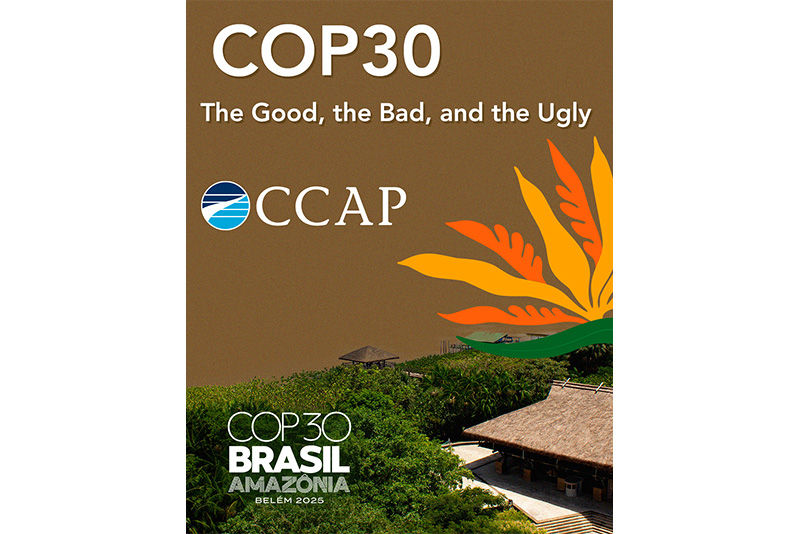The Potential Contribution of Nationally Appropriate Mitigation Actions in a 2015 Climate Agreement
- Tomas Wyns
- Oct 20, 2013
- 3 min read
In the next two years, negotiators and experts will need to work out how to configure a comprehensive 2015 international climate agreement under the United Nations Framework Convention on Climate Change. At the 17th conference of the parties in Durban, climate diplomats agreed to chart out a work plan (i.e. the Durban platform for enhanced action) that could lead to such an agreement. Currently, this work plan is being implemented. The main questions to be answered are: the enhancement of climate mitigation ambition levels before 2020; the post-2020 mitigation commitments for developed and developing countries; a solid adaptation framework; and the identification of facilitative instruments including financing and technology transfer.
CCAP believes that Nationally Appropriate Mitigation Actions (NAMAs) present an opportunity to create a new framework for developing country participation in global climate change mitigation where developing countries take advantage of the low-cost mitigation opportunities to meet their own mitigation goals in ways that also help meet domestic development priorities. The NAMA mechanism offers a way for international financial support to achieve emissions reductions on a sector-wide scale and contribute to enhanced mitigation efforts in developing countries.
The NAMA concept was first introduced in the UNFCCC negotiations in 2007 at the 13th conference of the parties in Bali as a means to define developing country action under a future climate agreement, to be agreed two years later. However, such an agreement that could have given a more specific implementation of NAMAs did not materialize by 2009. In 2010, at the 16th conference of the parties in Cancun, the concept of domestically supported and internationally supported NAMAs was introduced. Domestically supported NAMAs are mitigation policies and measures that are fully carried by the developing country. International supported NAMAs are policies that receive international financial support.
With two years to go before the 2015 conference of the parties in Paris, which is expected to deliver a new climate agreement, CCAP offers some initial thoughts on how NAMAs can aid the path to a 2015 international climate agreement.
First of all, CCAP believes that the NAMA instrument, if it is further refined toward a 2015 agreement, should reflect a shared vision as a way for developing countries to achieve both significant emissions reductions and national development priorities. Over the past year CCAP has been working with a group of developing countries and developed country donors to develop such vision of what ambitious and transformational NAMAs could be. Under this shared vision, NAMAs should strive to be sector-wide rather than project-based and couple policy and financial instruments to reduce key barriers to deploying low-carbon solutions. In doing so, NAMAs can catalyze significant private sector investment and transform the carbon trajectory of an entire economic sector. It is promising to see this vision take shape under the recently launched UK and German NAMA (finance) facility. This new approach to NAMA financing can be a model that can be pursued within the Green Climate Fund.
NAMAs and their implementation can, furthermore, provide realistic information about the greenhouse gas mitigation potential in targeted sectors both with and without international financial support. It may also be possible to aggregate the expected mitigation impact of these NAMAs to understand the potential contribution to a 2015 agreement from both supported and unilateral actions.
This information on estimated emissions reductions should not be considered fixed and final. The impact of such actions is clearly contingent on the level of both international and host country financial and policy support, as well as the effectiveness of actual policy implementation and other factors. To foster improvements to mitigation estimates over time, the changes in policies and measures, and the availability of international support for certain NAMAs could be reported and factored into periodic updates to an implementations schedule.
It speaks for itself that the above mentioned NAMA approach as part of a 2015 agreement cannot work without finance from bilateral sources as the multilateral Green Climate Fund. Having specific bilateral and multilateral finance pledges before 2015 will be the necessary oil that helps lubricate a 2015 agreement in the same way that NAMAs could provide the bottom up basis for future mitigation actions.
CCAP submitted its initial ideas on the role of NAMAs in a 2015 agreement to the UNFCCC in September 2013. We expect that these concepts will be further refined in the near future. Especially the links to financing mechanisms under the Green Climate Fund and the provisions on governance of a future climate regime are first on our list to develop further.




Comments